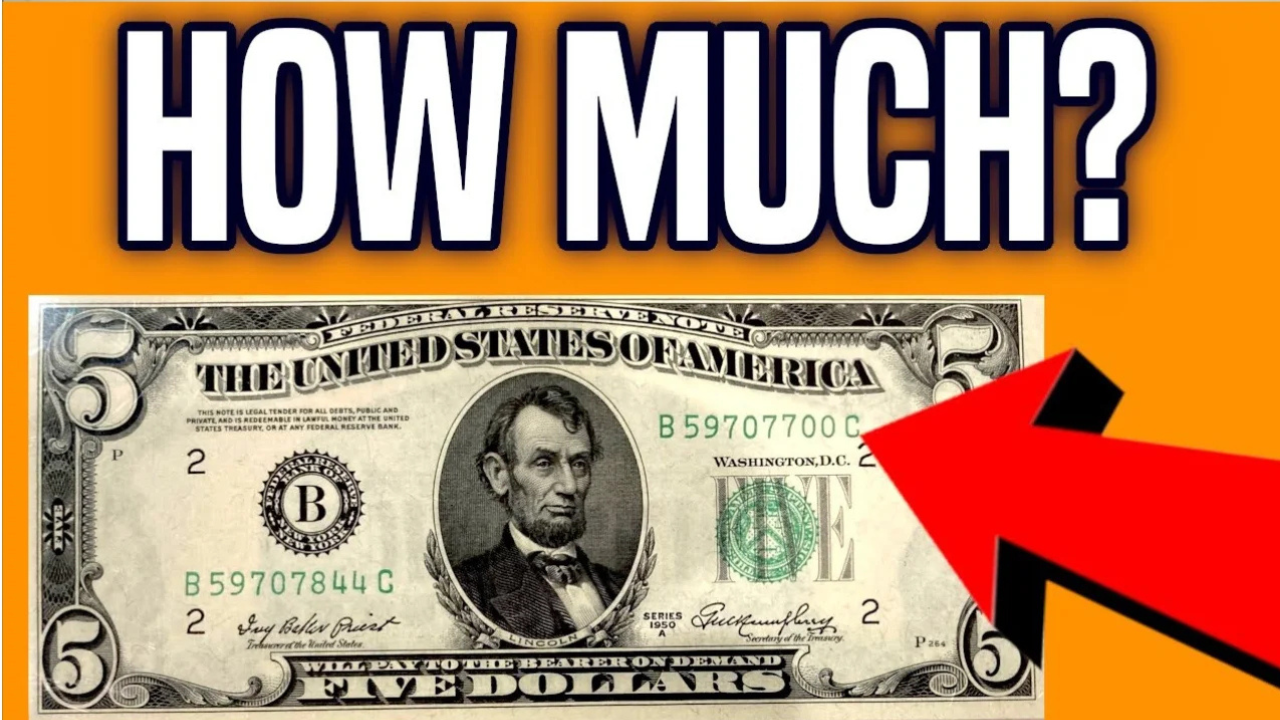Check the Money in Your Pocket:Money is something we handle many times a day, but we rarely stop to consider that something so commonplace could actually be valuable. Hidden within ordinary banknotes can be a “collector’s jackpot”: some $5 bills from the 1995 series have the green Treasury seal printed upside down. If you’re lucky (or observant), you might even have one in your wallet.
This printing error is minor, but also rare. For collectors, such a $5 bill can be worth hundreds or even thousands of dollars (depending on its condition). But before you rush to the bank, here’s how to check for this feature—and how to protect yourself if you find one.
What is the “upside-down seal” error?
- On a typical US $5 bill, you’ll see two seals on the front:
- On the left, the black Federal Reserve seal
- On the right, the green Treasury Department seal
In a misprinted bill, the green Treasury seal (and often the serial number, which is also printed in green) appears upside down relative to Lincoln’s portrait—rotated 180 degrees. This occurs when the sheet or plate is fed incorrectly during the printing process. Since the seals and serial numbers are printed last, these types of errors are very rare.
The collector refers to this as an “inverted seal/inverted overprint error.” It’s important that this error be genuine (occurring during the printing process) and not the result of tampering or alteration.
How to Identify This Note in Your Wallet
Here’s a step-by-step guide you can try right now (if you have a 1995 $5 bill, take it out):
- Check the series date
Look near Lincoln’s portrait—the series should say 1995. Only this series has this error.
2. Check the green Treasury seal (on the right side of the note)
On a regular note, the seal is upright, aligned with Lincoln’s face. On the error note, the seal is upside down: the text is reversed.
3. Check the green serial number
The serial number, often printed in green, will also appear upside down (like the seal).
4. Compare it to a regular note
If you have another $5 bill (a different series or a regular one), compare them. The difference is even more obvious when viewed side by side.
5. Look for signs of tampering
The genuine error note should have consistent printing, no excessive ink smudges, and no signs of alteration. If it looks like something was overprinted or cut, be cautious.
6. Consider the condition of the note
Even if you confirm the error, a new, uncirculated (nearly pristine) note will be worth much more than a wrinkled, folded, or torn one.
Why it matters – Value and Risk
Because such errors are rare, collectors are willing to pay a premium for them. Even a slightly damaged banknote with an error can sell for many times its face value.
According to some reports, these banknotes can be worth anywhere from a few hundred to several thousand dollars, depending on their condition, the clarity of the error, and their overall appeal.
However, not every “unique” seal or mark is an actual error. Counterfeit or altered banknotes are also in circulation, or some older banknotes may have been deliberately printed with such features. Therefore, verifying authenticity is crucial.
What to Do If You Think You Found One
If you believe you have a 1995 $5 bill with an upside‑down seal, here’s how to proceed:
-
Do not spend it
Treat it with care — once it enters circulation or gets folded and damaged, its collector value could drop. -
Protect it
Place it in a protective sleeve or plastic currency holder. Avoid further handling, folding, or exposure to moisture. -
Document it
Take good photographs (both sides, close-up on the seal and serials) under good lighting. -
Get expert appraisal / grading
Contact a reputable currency grading company (e.g. PMG, PCGS Currency) or an established currency dealer. They can verify if the error is genuine and grade the condition. -
Research comparable sales
Look at recent auction results or listings for similar 1995 inverted‑seal $5 bills. That gives you a ballpark for what yours might be worth. -
Sell wisely
If you choose to sell, do so via trusted auction houses, numismatic marketplaces, or direct to known collectors — not randomly or to people you don’t trust.
Frequently Asked Questions (FAQs)
Q: Is it legal to own or sell a misprinted $5 bill?
A: Yes. U.S. law allows for the ownership and sale of error currency. These bills remain legal tender (you could, technically, spend them), but their collector value far exceeds $5.
Q: Could there be more than just the inverted seal (other errors)?
A: Yes. Some error bills also have inverted serial numbers or misaligned printing (offsets). If those accompany the seal inversion, it can further increase interest.
Q: Could someone fake an inverted seal?
A: Unfortunately yes. Some bills may be manipulated (reprinted or altered) to mimic the error. That’s why professional authentication is key.
Q: What determines how much a genuine inverted‑seal $5 is worth?
A: Main factors are condition (how crisp and undamaged it is), clarity of the inversion, market demand, and whether it’s graded/certified by experts.
Q: If I don’t have a perfect one, is it worthless?
A: Not necessarily. Even circulated or slightly worn examples may fetch more than face value — though they won’t command the top prices of pristine examples.
